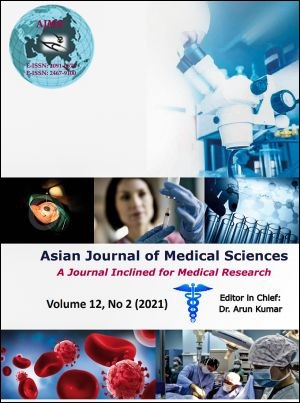Study of vulvovaginal candidiasis in symptomatic women of reproductive age group attending tertiary care institute, Haryana province
Keywords:
Candida albicans, Non-albicans species, Vulvovaginal Candidiasis, reproductive age, women, Haryana provinceAbstract
Background: Abnormal vaginal discharge results from a variety of infectious and noninfectious causes. Vulvovaginal candidiasis (VVC) is caused by the overgrowth of Candida species in the vagina and is characterized by itching, erythema and curd like vaginal discharge. Vulvovaginal candidiasis is most often caused by Candida albicans, however, other species of Candida such as Candida glabrata, Candida parapsilosis, and Candida tropicalis are emerging.
Aims and Objectives: The current study was designed to study microbiological diagnosis and anti-fungal susceptibility testing of vulvovaginal candidiasis in symptomatic women of reproductive age group attending our tertiary care institute.
Materials and Methods: The present study was conducted in female patients in the reproductive age group (15 to 50 years), with the complaint of excessive vaginal discharge. Vaginal swabs collected from patients with abnormal vaginal discharge were processed for direct examination of the Candida species. Results of the culture and antimicrobial sensitivity testing were documented. Collected data was entered in Microsoft excel sheet and analysed. Statistical analysis was done using descriptive statistics.
Results: During study period 300 patients were included for this study after satisfying inclusion and exclusion criteria. All patients underwent microbiological study of vaginal discharge sample to diagnose vulvovaginal
candidiasis. Total 300 samples were tested, out of which 18.33% (55 samples) were tested positive for candidiasis. Positive samples were studied further. In present study 26-30 years age group (25%) was most common age group followed by 31-35 years (24%). Vaginal/vulvar itch (85%), vaginal malodour (78%) and vaginal discharge (71%) were most common symptoms noted in present study. Previous history of similar complaints in past (38%), history of recurrent vulvovaginal candidiasis (16%) and antibiotic use (15%) were most common predisposing factors for vaginal candidiasis in present study. Out of 55 isolates, Candida albicans (65%) was most common followed by Candida tropicalis (24%) and Candida glabrata (11%). Antifungal susceptibility was best for amphotericin B followed by clotrimazole, miconazole and least for fluconazole.
Conclusion: Vaginal candidiasis is a common infection in women worldwide. Definitive laboratory procedures are of paramount importance to identify Candida isolates from suspected VVC cases to a species level to
ensure appropriate and effective use of antifungal agents.
Downloads
Downloads
Published
How to Cite
Issue
Section
License
Authors who publish with this journal agree to the following terms:
- The journal holds copyright and publishes the work under a Creative Commons CC-BY-NC license that permits use, distribution and reprduction in any medium, provided the original work is properly cited and is not used for commercial purposes. The journal should be recognised as the original publisher of this work.
- Authors are able to enter into separate, additional contractual arrangements for the non-exclusive distribution of the journal's published version of the work (e.g., post it to an institutional repository or publish it in a book), with an acknowledgement of its initial publication in this journal.
- Authors are permitted and encouraged to post their work online (e.g., in institutional repositories or on their website) prior to and during the submission process, as it can lead to productive exchanges, as well as earlier and greater citation of published work (See The Effect of Open Access).




